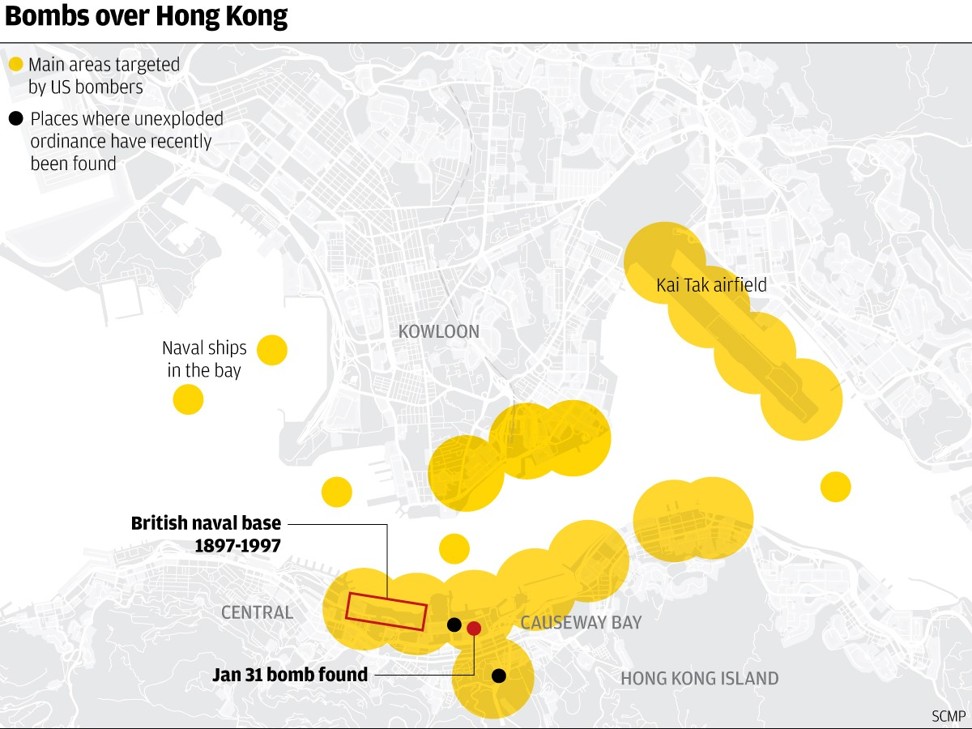
Hong Kong police disarm second 450kg wartime bomb after ‘dirty, difficult and dangerous’ operation
Explosive Ordnance Disposal officers cut through shell of device and burn off explosives inside
After a mass evacuation of close to 5,000 people, bomb disposal officers conducted an overnight operation, which lasted about 24 hours, to safely defuse the unexploded ordnance weighing around 450kg (1,000lbs), by Thursday morning.
Construction work at the site for the Sha Tin-Central rail link resumed within three hours of the bomb being made safe.

Fifteen bomb disposal officers were deployed in the operation, which involved having to cut through the device’s casing and then burning off the explosives inside. At 10.45am, police announced that the job was done, nearly 24 hours after workers found the bomb.
“Although the handling of the bomb was more difficult than expected, the time it took [to defuse it] was actually relatively short,” said superintendent Maxim Kwok Mei-sum, police divisional commander for Wan Chai.
The operation took just a few hours less than a similar one over the weekend, which lasted at least 26 hours. An unexploded device, believed to be of the same AN-M65 model dropped by American warplanes sometime between 1941 and 1945, was discovered at the site on Saturday.
Police bomb disposal officer Alick McWhirter of the Explosive Ordnance Disposal Bureau said the latest operation was easier because the site was more prepared.
“We were quicker this time because the construction site management and workers were exceptionally helpful. They had done some preparation work and were able to provide us with equipment as soon as we arrived, and that saved many hours of hard work,” he said.
That said, McWhirter stressed that the operation was made considerably more difficult by the rain-soaked work site and the device’s deteriorating condition.
“Bomb disposal operations are dirty, difficult and dangerous. In this particular case, all three were true,” he said.
“Because of the rain yesterday, the working conditions were not good. Because of the location, it was extremely difficult to be able to access it. Because of the nature of the [bomb’s] firing mechanism and fuses – one of which we couldn’t even see – it was extremely dangerous for the officers engaged in the disposal operation.”
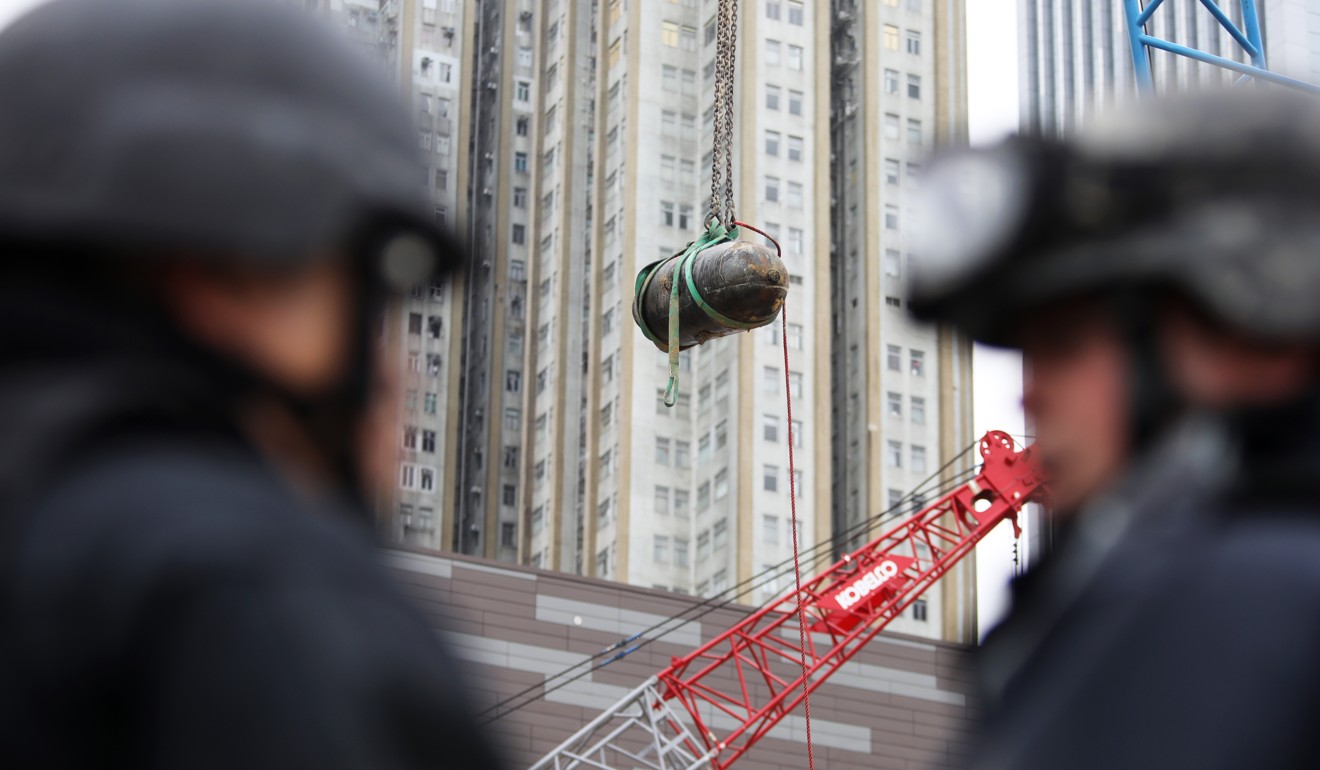
Asked if more bombs might be found on the site, McWhirter said: “I never anticipate. I just wait and see what happens.”
After the operation, roadblocks in the area were gradually lifted. Traffic – both pedestrian and road – was back to normal by Thursday afternoon after being suspended around the site perimeter. Some footbridges linking buildings in the area had also been cordoned off.
All buildings, including hotels, were allowed to reopen by 11am.
MTR construction workers were allowed to return to the affected site after a safety inspection on Thursday afternoon.
An MTR spokeswoman said a further assessment would be needed to determine whether the two bomb discoveries had delayed the progress of the rail link.
She also said the company had implemented a number of measures to ensure staff safety since Saturday when the first bomb was unearthed.
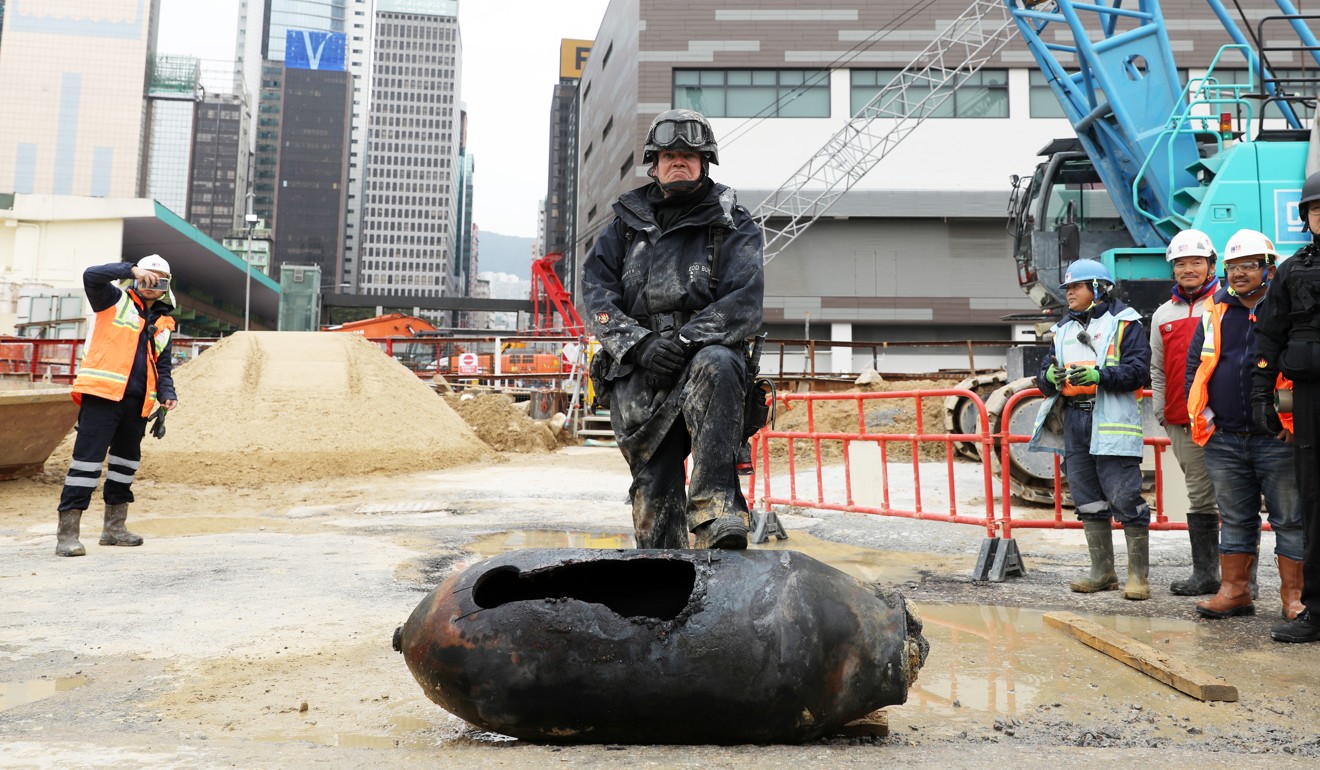
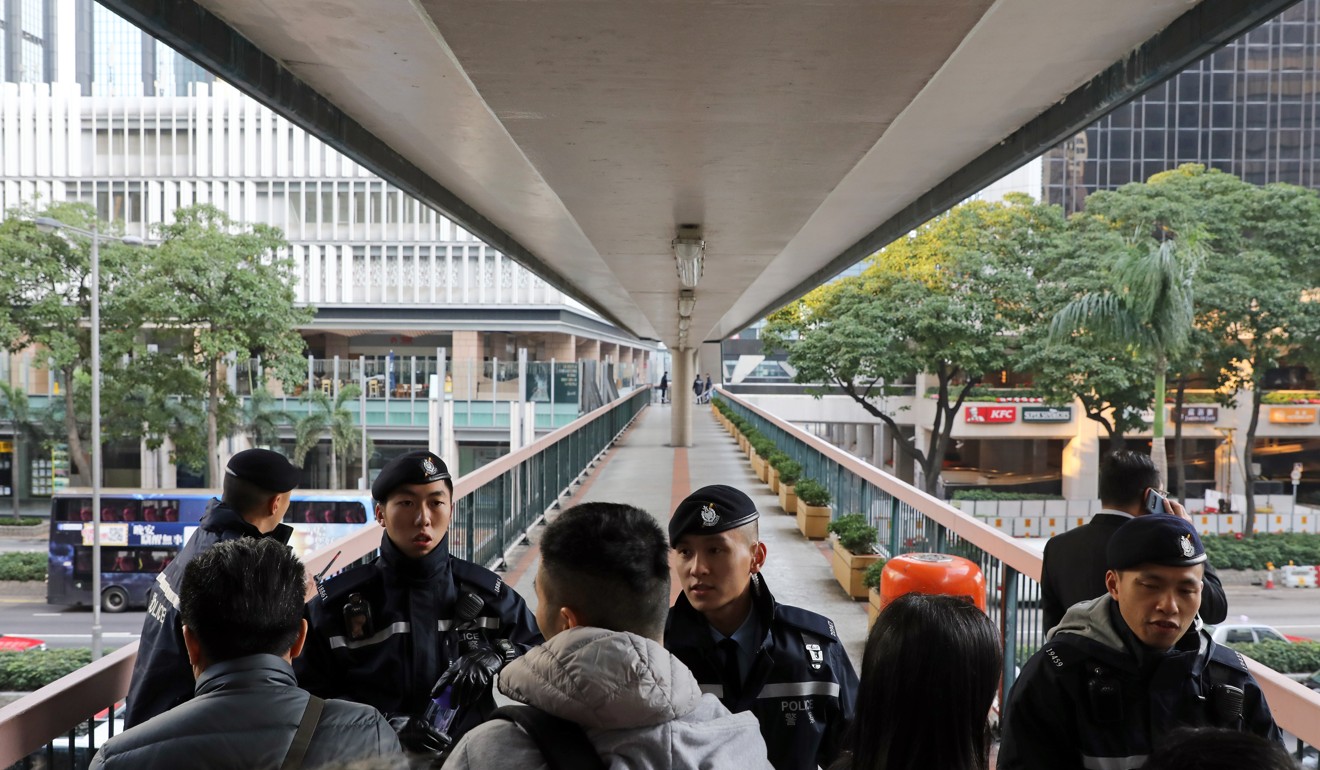
“We have stepped up safety awareness at the site and invited EOD officers to train workers on what to do if they discover a bomb and how they should handle it,” the spokeswoman said.
A professional surveying company, hired by the railway company, was also conducting a metal detection sweep over the site.
At noon, some shops were still closed, but several restaurants, banks and convenience stores had opened for business.
An employee at a coffee shop in one of the affected buildings said business had been hit by the lockdown as they only opened at around 12.30pm, instead of the usual 8am.
“Our busiest time of the day is in the morning, [which is] when the roads were closed,” she told the Post.
She estimated that on regular weekdays, the shop had at least 100 customers during the morning rush hour, as office staff grabbed a cup of coffee on their way to work.
“We were told to go to another location to work this morning. Once the news said it was safe to come back, we quickly rushed over to open the doors,” she said.
Jeffrey Wo, a manager in a restaurant at Causeway Centre, an office tower linked to a cluster of restaurants, estimated that the lockdown had led to a 10 per cent drop in business.
“Of course we were affected, especially as we already had to close the shop on Sunday morning when the first bomb was found,” Wo said.
“But it can’t be helped – as long as everyone’s safe, we’ll make do.”
Hong Kong’s buried wartime bombs – how did they get there?
Several people had arrived at their office buildings on Thursday to find out that they could not go to work. A man trying to go to work at Harbour Centre said: “I can’t walk over there? It’s closed? I’d better call my boss.”
May Li, a courier, had to turn back after finding a pedestrian bridge had been closed.
“I was supposed to deliver these letters to Great Eagle Centre. The company didn’t tell me about the lockdown, so I’ll just have to try again later if the buildings are reopened. Otherwise the letters will just pile up in the office, and I have to come again another day,” Li told the Post near the Hong Kong Convention and Exhibition Centre.
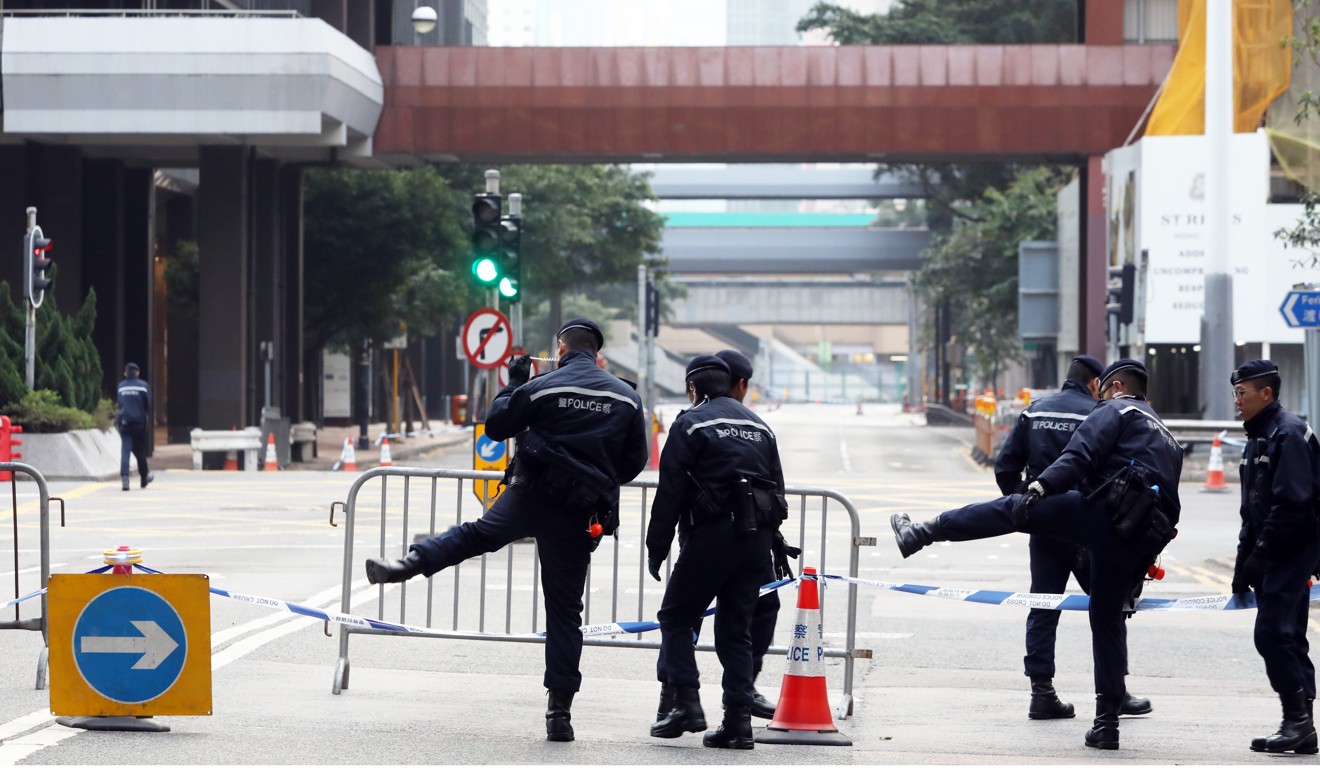
A group of four Vietnamese visitors who were in the city for an IT examination at the same building on Friday was also left stranded.
“We wanted to come a day earlier to check how to get here, but now we’re a bit worried. Our visa lasts only seven days, and it’s expensive to take the exam,” said IT worker Hoang Truong, 28. “We hope we’ll be able to take it tomorrow. We had to pay for our hotel, flights, everything by ourselves one month ago. The exam itself costs US$2,000.”
The daily flag-raising ceremony at Golden Bauhinia Square was cancelled for the second time in a week.
More than a dozen cross-harbour bus routes and 18 island routes plying the area were affected, while the bus terminuses at Wan Chai North and Expo Drive East were closed. The Star Ferry between Wan Chai and Tsim Sha Tsui remained shut at 7am. Car parks also remained closed.
At 11pm on Wednesday night, police said a total of 4,600 people had been evacuated from the area, including 1,500 from the Harbour Centre and 1,000 from Wan Chai Sports Ground, as well as from Great Eagle Centre and Sun Hung Kai Centre. The bomb was discovered on Wednesday morning at a site at the junction of Convention Avenue and Tonnochy Road.




